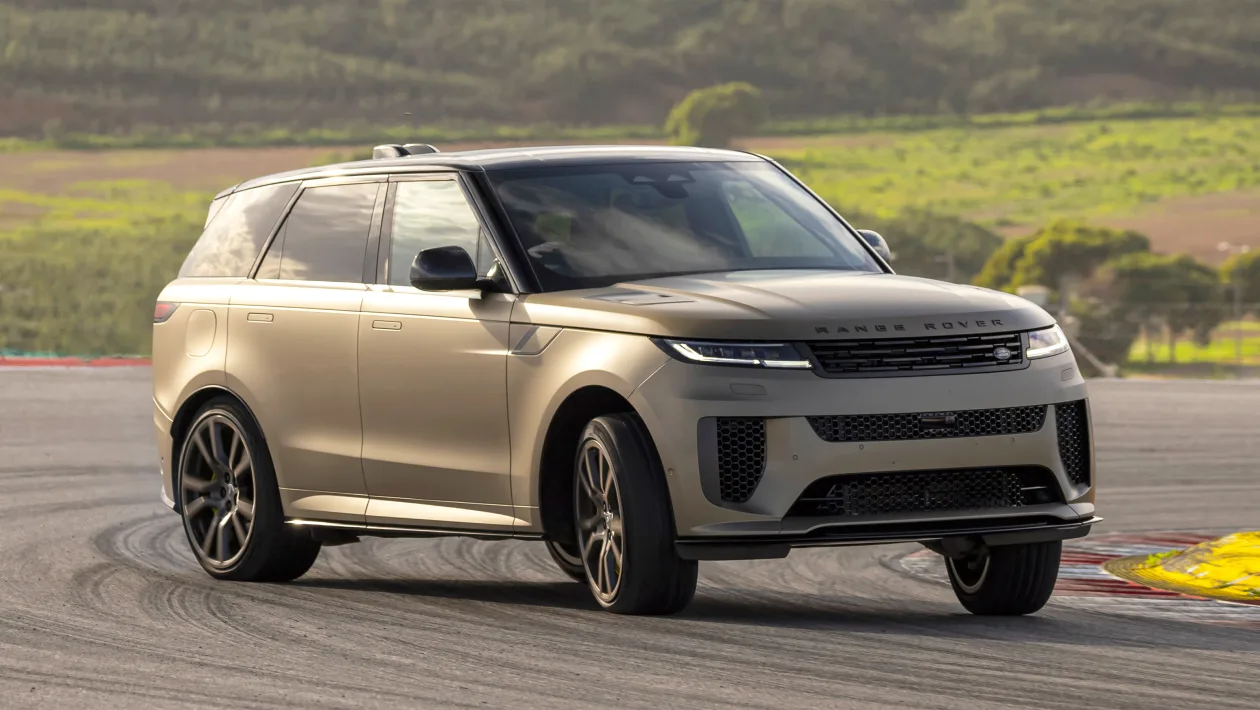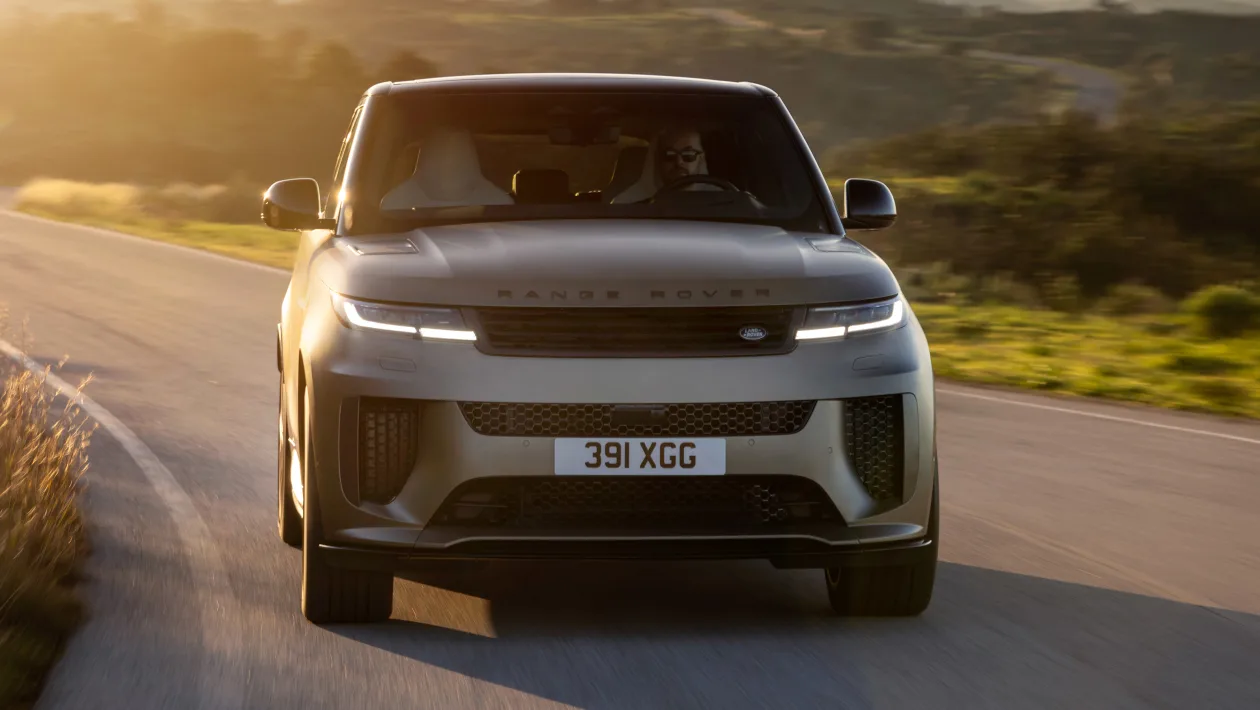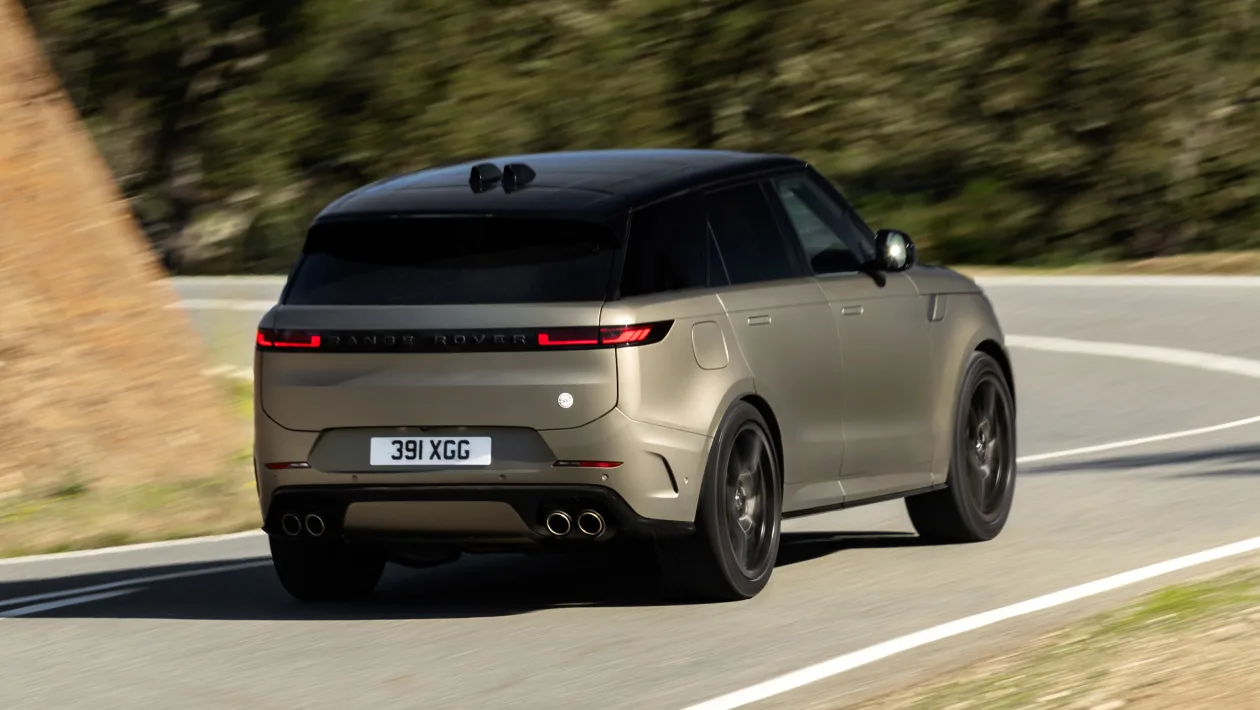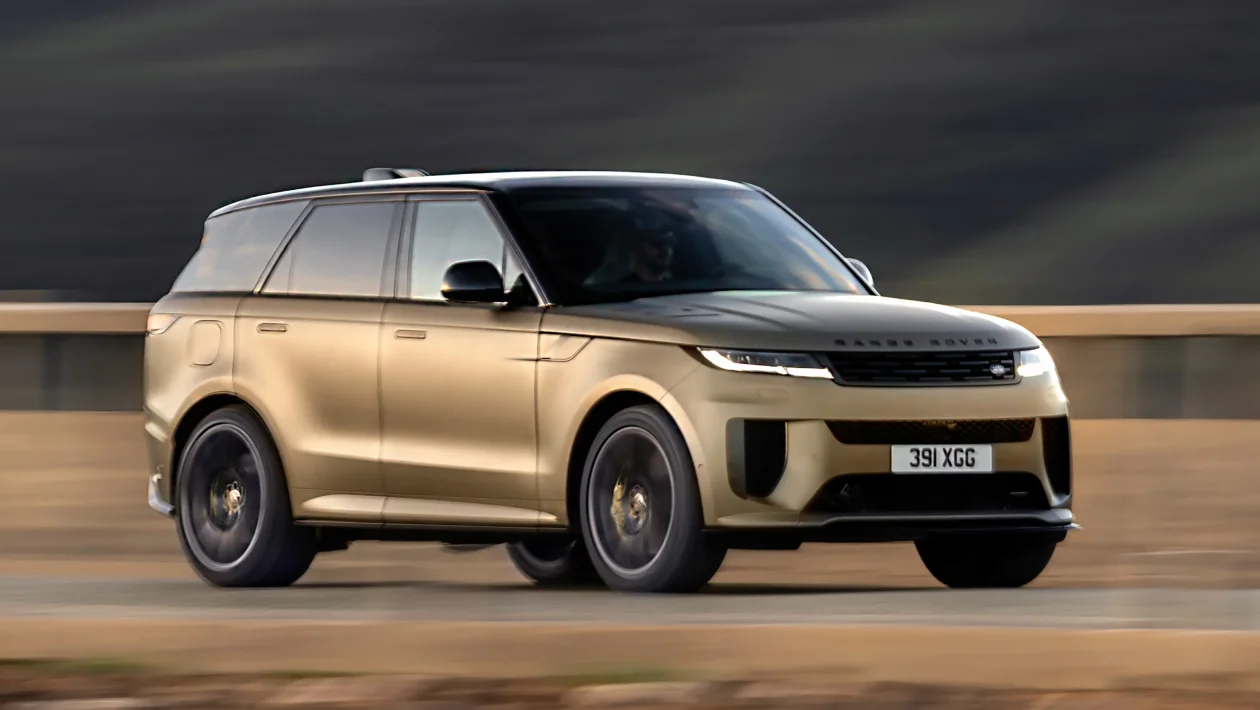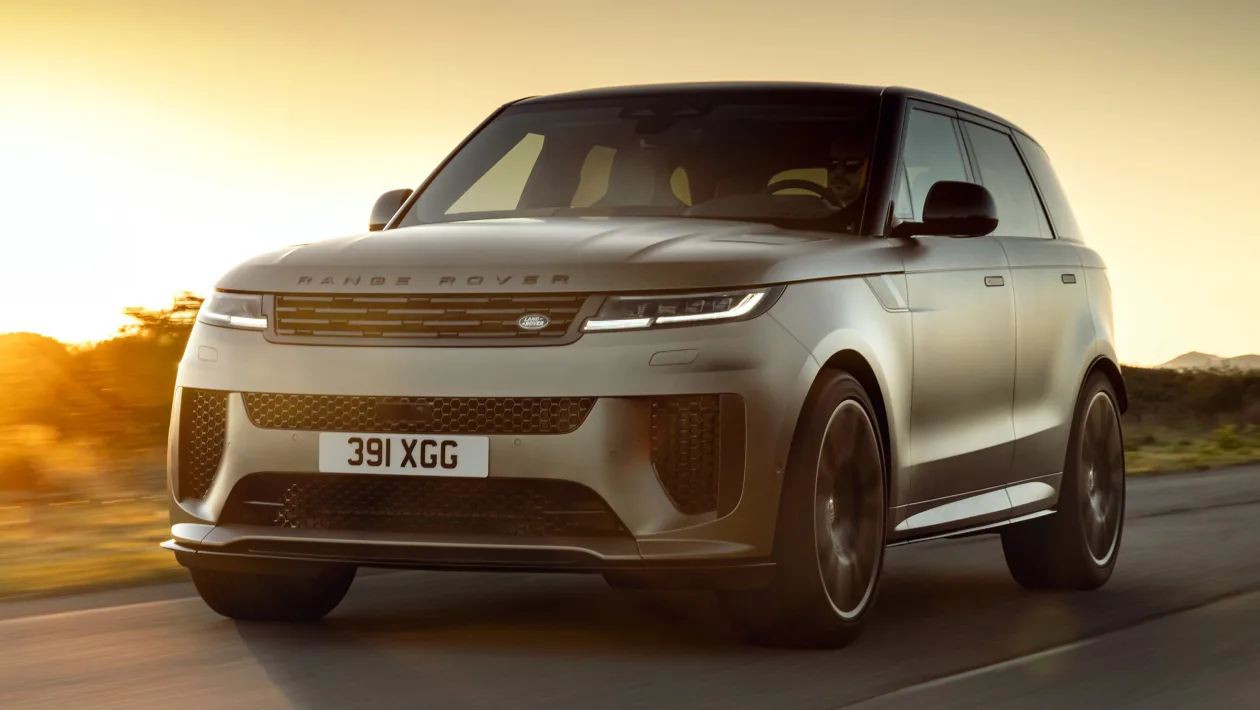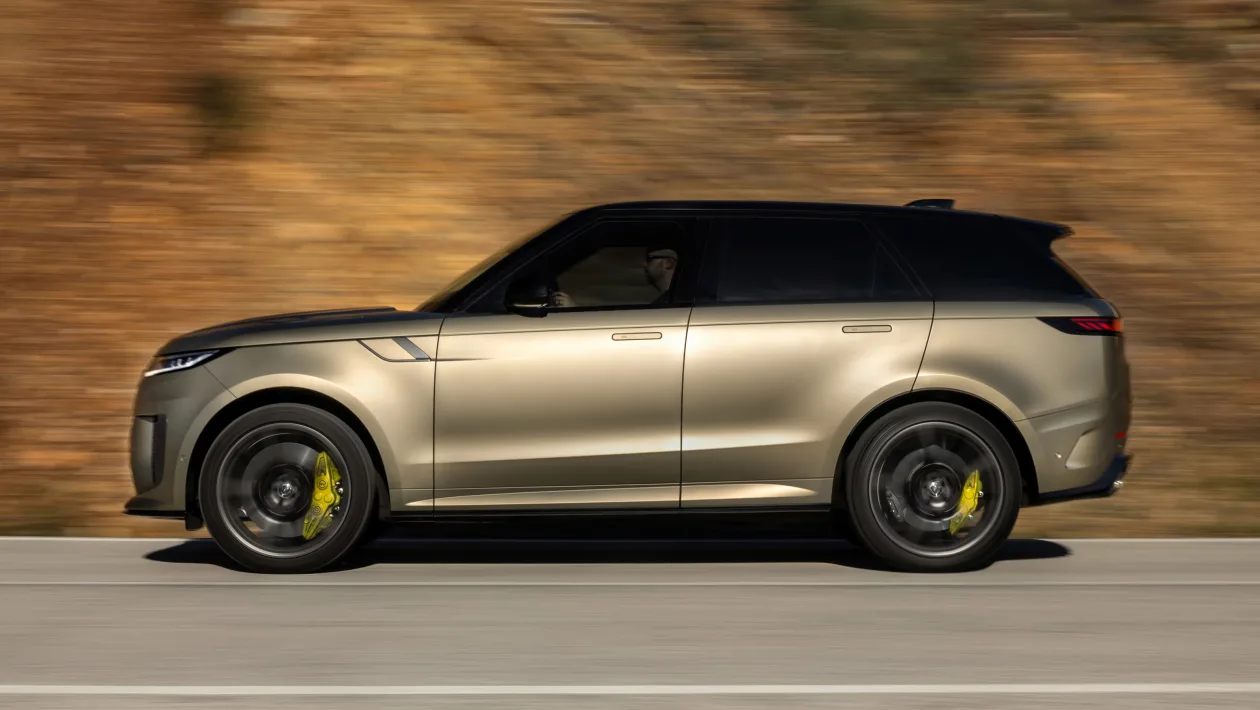The ultra-high-performance Range Rover Sport is here, this time with a greater focus on engaging the driver rather than annoying everyone else sharing the road with it.
Remember the old Range Rover Sport SVR? Painted bright blue, a pair of Recaro seats that wouldn’t look out of place in a Project 8 and an exhaust system that came out of the factory set to obnoxious mode? Its replacement is nothing like that, and that’s a very good thing. What you’re looking at is one of the most accomplished fast SUVs of all – which it needs to be, because despite what you thought of the old SVR, in terms of positive financial performance no model in the Land Rover lineup got close to it.
The latest Range Rover Sport feels more like a smaller Range Rover rather than an SUV with genuine sporting pretensions, even in P530 V8 guise. Its refinement, comfort, and material quality are far closer to luxury than anything sporting, something the SV address and then some.
A chassis that wouldn’t look out of place underpinning a new F-Type supports the SV. Air springs are retained, but they have been recalibrated to benefit from a series of hardware and software changes, including new hydraulically-linked active dampers that have allowed lead engineer Matt Becker and his team to do away with anti-roll bars. There’s also a new rear subframe, the rear-wheel steering has its own calibration, and the rear diff is new too. Hooking this altogether is a new 6D dynamic control system to control pitch and roll, replacing the standard Dynamic Response Pro electric anti-roll system.
In SV mode, there’s a directness and linearity in how the steering reacts to inputs, allowing for a clean arc to be scribed through varying angles of corner the track offers. The weight and response rate feel natural and instinctive, its willingness to allow corrections without shocking the systems are unexpected from a car in this sector.
Much of how cleanly the SV steers is down to the 6D dynamics (the term comes from the six-degrees of axes a rigid body can move in a three-dimensional space). It works by transferring fluid from one side of the car to the other, managing pitch and roll to keep the car as flat as possible. Although there’s still a degree of roll that allows you to lean against, the system prevents the excessive lurching such cars struggle to control under hard cornering and braking – JLR says it can generate 1.1g of lateral load on the standard all-season tire, and 1.2g on the optional Michelin Pilot S 5 rubber. Throw in the bespoke rear-wheel steering, and the SV feels totally within itself on track. Flowing from turn-in to apex to corner exit with such confidence, you almost feel guilty for being so impressed by the capability of a car you’d expect to see parked in the paddock and not clipping an apex.
A torque limit for the eight-speed ZF automatic prevents the BMW 4.4-litre twin-turbocharged V8 from offering the on-throttle adjustability the likes of Aston Martin’s DBX707 and Ferrari Purosangue offer, but this is an SUV that can also tackle the kind of off-road terrain you’d expect a Range Rover to deal with, and on-the-limit throttle adjustability is, most likely, very low down the priority list of owners.
Dynamically the car SV has been set up and optimized for running on the standard Michelin Pilot 4 S tires and forged wheels, rather than the optional 23-inch carbon fiber wheels and S 5 rubber fitted to our test car. On the track they find remarkable purchase, communicating any slip back to your fingers as cleanly as they can, allowing you to build confidence and tuck into the V8’s grunt. If you do find yourself at the Nürburgring with your SV, the 5 S tire will now last eight laps before shredding itself to oblivion, where the previous SVR would destroy a set of tires within two.
Sourced from BMW, the hot-vee V8 delivers 625 kW and 590 Nm of torque, and for what it lacks in drama compared to the old 5-liter supercharged V8, it makes up for with a more cultured and subtle tone. Your neighbors will approve, owners of BO55 number plates less so. Protecting the gearbox from a torque overload makes the downshifts slower than you’d ideally want when enjoying all that performance, and can result in a second pull of the left-hand paddle just when you think the gear you asked for wasn’t going to arrive. Performance is on another plane to the old SVR, with 100 km/h arriving in 3.8 seconds (or two-tenths quicker if you go for the carbon wheels and sticker tires).
Carbon ceramic brake discs, the first fitted to a Range Rover and developed by Brembo, are an option and measure 440 mm at the front, 390 mm at the rear and their eight-piston calipers feature an X-pattern design to maximize braking performance. A handful of track laps didn’t find them wilting, and unlike many carbon ceramic setups, the pedal feel isn’t masked with dead-spots in the travel, which is all the better for modulation.
Away from the most recent home of the Portuguese Grand Prix and on the roads between Faro and Lisbon, the RR Sport SV is a far less boisterous machine than its predecessor. In Comfort mode, it feels noticeably more locked down than the Sport P530 that shares the same engine and adds a level of tautness to the body control as the 6D software works to prevent unnecessary pitch and roll, or ‘nodding head’ syndrome as one engineer described it.
Fitting 23-inch carbon wheels and carbon ceramics save over 70 kg in unsprung mass, and on poor surfaces where your eyes tell you to prepare for a shake and shudder over the upcoming terrain, the SV is far more composed than your expectations. A regular Sport would struggle to absorb the impacts, while Aston’s DBX and Ferrari’s Purosangue would certainly let you know exactly what the wheels and tires are dealing with.
And just as the SV impresses on track with its willingness to turn in, mid-corner balance and accelerative energy, the same is true on the road. If anything, it’s more impressive because, cliche alert, the way it shrinks itself around you makes for an easier than expected ability to place the car exactly where you need. Any vagueness and imprecision dismissed. It’s no M5 CS, but it jumps to the top of the pile in its class in how it conducts itself when asked to deliver on its credentials.
There is, of course, no need for a 635 kW, 2.5-ton SUV that’s as competent on track and the road as the SV is. But you can say that about so many cars, and the SV showcases technology that really does transform the driving experience for the better. Making such big cars more precise, and therefore easier to control and manage, has to be a good thing. And the Range Rover Sport SV is a very good thing indeed.




